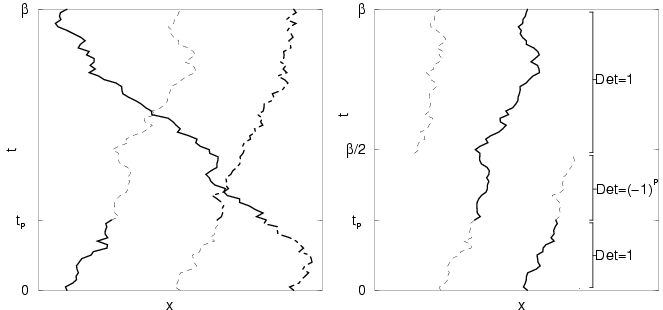
|

|
In this section, the multilevel sampling procedure from sections
2.5.3 and 2.6.9
will be extended to the sampling with open paths for Bosons and
distinguishable particles. Fermions will be discussed in
section 5.2. A picture of
an open path is shown in Fig. 5.1. We chose to
put the open ends at time slice
![]() because we will
apply the double reference method from section
2.6.4 to fermionic systems.
For distinguishable particles, the open path is a single polymer that
interacts with the other particles. The contributions to the action
are calculated in the same way as is done for closed paths except for
the diagonal pair action in the time slice containing the open
ends. There, each open end contributes with the weight
because we will
apply the double reference method from section
2.6.4 to fermionic systems.
For distinguishable particles, the open path is a single polymer that
interacts with the other particles. The contributions to the action
are calculated in the same way as is done for closed paths except for
the diagonal pair action in the time slice containing the open
ends. There, each open end contributes with the weight ![]() ,
which can be understood from Eq. 2.25.
,
which can be understood from Eq. 2.25.
Without interactions, the distribution of the open ends is by
definition given by the free particle density matrix in
Eq. 2.11. This equation will be used in the free
particle sampling method for the generation of new path sections that
contain the open ends. For closed paths, one samples the new positions
from a Gaussian distribution centered at the midpoint between the
slice above and below (Eq. 2.63) because of the two
spring terms in the free particle action. The open ends are only
connected in one direction in imaginary time. Therefore, the free
particle sampling distribution for open ends being connected to
![]() or
or ![]() reads,
reads,